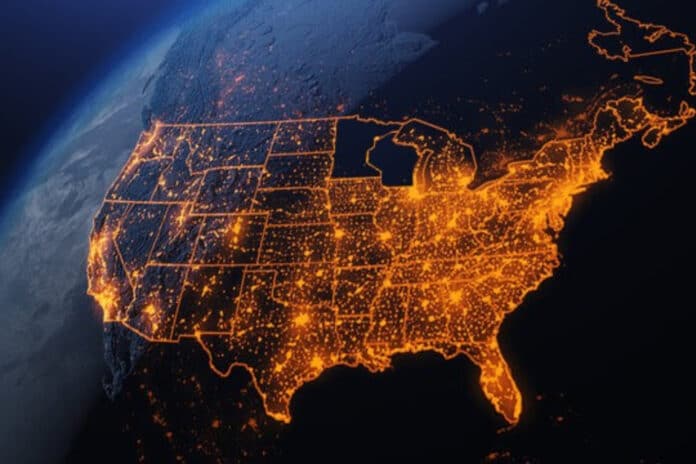
(Daily Caller News Foundation) — Proposed Environmental Protection Agency (EPA) rules regulating carbon dioxide emissions for power plants would lead to blackouts in a large slice of the Midwest and impose costs of nearly $250 billion, according to a new analysis by the Center of the American Experiment (CAE).
The EPA’s proposed regulations would require fossil fuel-fired power plants to adopt developing technologies, such as carbon capture and sequestration (CCS) and hydrogen blending, in order to significantly bring down their greenhouse gas emissions over the coming decades. CAE filed comments this week in response to the EPA’s proposals, highlighting in its analysis that the EPA has overestimated the efficacy of wind and solar while exposing the 45 million people living in the area served by the Midcontinent Independent System Operator (MISO) power grid to elevated blackout risks.
The EPA “does not appear to have the expertise necessary to enact such a sweeping regulation on the American power sector,” CAE wrote in its comments.
CAE’s analysis found that the EPA’s modeled MISO grid could result in massive blackouts across the 15 states it serves, with one stress test scenario estimating that nearly one in five MISO-served households would be without power. Additionally, CAE calculated that building up enough capacity to avoid its projected blackouts in the MISO region would cost $246 billion in total by 2055.
That figure breaks down to $7.7 billion annually on average through 2055, a number which is greater than the EPA’s projected $5.9 billion annual benefit to the entire country if the proposals are finalized.
“For EPA’s RIA on the proposed rules, EPA assumes 99 percent of the emissions reductions resulting from changes to the electric grid are driven by the subsidies in the Inflation Reduction Act (IRA), which is called its ‘Post-IRA’ Base Case, and only 1 percent is from the proposed rules,” said Isaac Orr, policy fellow for the CAE.
“But EPA never studies whether its base case, which accounts for 99 percent of the changes, maintains enough reliable power plants on the grid to meet electricity demand, as they only looked at that last 1 percent,” Orr said, adding that “this is the regulatory equivalent of studying the structural integrity of the top floor of a 100-story building without doing so for the preceding 99 floors.”

“EPA is required to justify any proposed regulations from a scientific and economic standpoint in a document called a Regulatory Impact Analysis (RIA). Unfortunately, EPA used misleading assumptions in its analysis to justify the rules that don’t accurately reflect their impact on the reliability of the grid or their cost,” Orr told the Daily Caller News Foundation.
The Edison Electric Institute, a leading trade group for U.S. energy companies, also filed comments in response to the EPA’s proposals this week, highlighting that the EPA’s assertion that the efficacy of hydrogen blending and CCS has been adequately demonstrated is legally insufficient.
“The proposed rule does not require that plants go offline,” an EPA spokesperson told the DCNF. “The proposed rule would require plants to install proven technology to abate greenhouse gas emissions. The proposal provides owners and operators of power plants with ample lead time and substantial compliance flexibilities, allowing power companies and grid operators to make sound long-term planning and investment decisions, and supporting the power sector’s ability to continue delivering reliable and affordable electricity.”
The EPA “looks forward to reviewing comments and constructively engaging with stakeholders as we work to finalize the proposed standards,” the spokesperson continued.
Two of the “proven” technologies cited by the EPA in its proposal are CCS and hydrogen blending. A considerable majority of CCS projects have underperformed or failed across the world, according to a 2022 report by the Institute for Energy Economics and Financial Analysis, while hydrogen blending is a technique that is neither completely safe nor effective, according to a 2022 report by the Pipeline Safety Trust.
The EPA is seeking to impose these new regulations under the Clean Air Act in a way that accords with the limits to its authority clarified by the Supreme Court in West Virginia v. EPA, decided in June 2022. The proposals align with the Biden administration’s wider push to achieve net-zero carbon emissions in the American power sector by 2035 and to have the American economy reach net-zero by 2050.
Some aims of the new proposals are “more aggressive” than those of the Clean Power Plan (CPP), an Obama-era attempt to impose stiff regulations on fossil fuel-fired power plants that ultimately formed the basis of West Virginia’s successful legal challenge in West Virginia v. EPA, according to comments filed in response to the rule by the Competitive Enterprise Institute (CEI).
Mark Christie, a top official for the Federal Energy Regulatory Commission (FERC), warned in June that “catastrophic consequences” could await the U.S. if the premature retirement of fossil fuel-fired power plants continues before green energy alternatives are ready to supply large amounts of power to the grid.
MISO did not respond immediately to a request for comment.
















